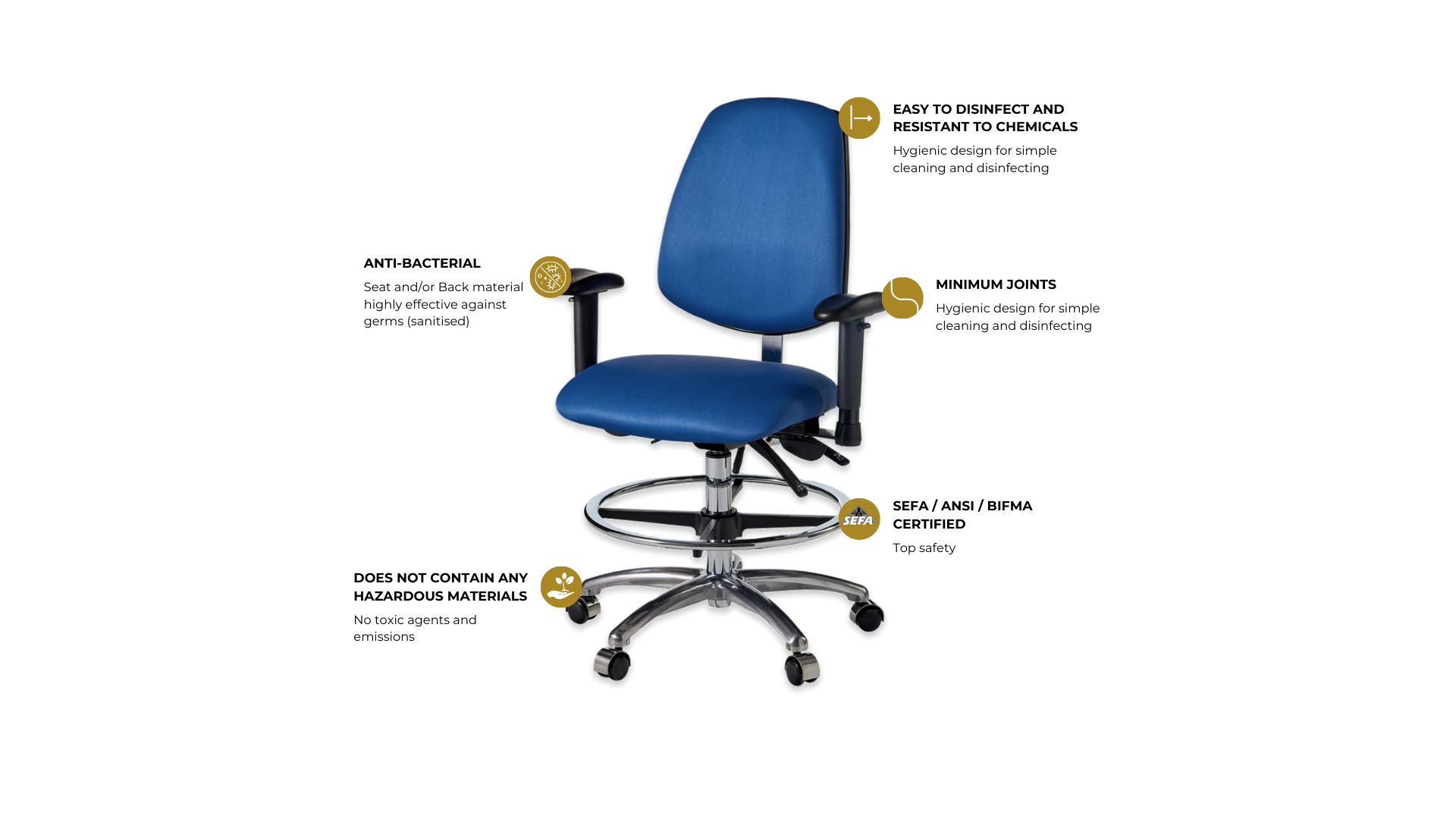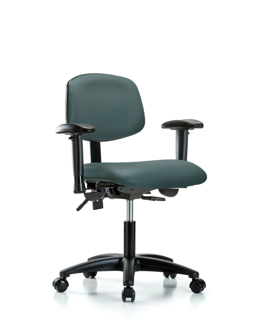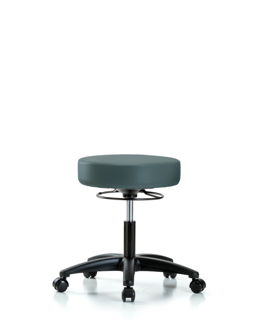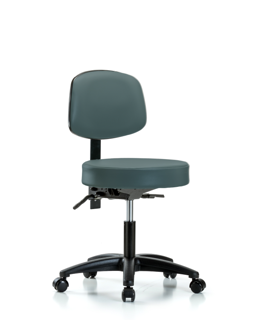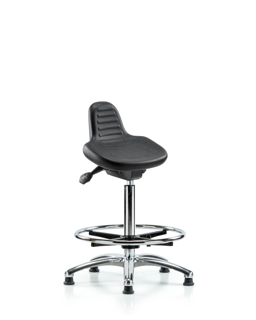Choosing Your Lab Seating: The Ultimate Guide
Written by Canadian Scientific
Proper seating can often be overlooked in lab design-but we won’t stand for this! Join us as we dive into the different types of lab seating available on the market and how to choose lab seating that will benefit your laboratory's ergonomics, safety, efficiency, and more. This ultimate guide will walk you through everything you need to know when selecting lab seating, from types of seating, to required safety features, to customizable ergonomic options. Let’s get started!
#1 Meet the Industry Standards
The first thing to is to find a supplier who sells chairs and stools that are compliant with the following industry standards.
SEFA 12 - Laboratory Grade Seating (Scientific Equipment & Furniture Association) Recommended Practices
SEFA is a globally recognized set of standards, providing a comprehensive framework to assess the durability, safety, and structural integrity of lab casework and equipment. It enables manufacturers and designers to create safe, efficient, and user-friendly lab environments while ensuring strict compliance through testing of lab-grade furniture. All Canadian Scientific Lab Systems seating is tested and compliant with SEFA 12 standards.
ANSI (American National Standards Institute) Industry Standards
ANSI is a private, nonprofit organization that manages the creation of voluntary consensus standards for products, services, processes, systems, and personnel within America. All Canadian Scientific Lab Systems seating is tested and compliant with ANSI standards.
BIFMA (Business and Institutional Furniture Manufacturers Association) Standards
BIFMA is an ANSI accredited standards development and refinement organization that follow the ANSI process, to ensure industrial furniture products meet the marketplace standards. All Canadian Scientific Lab Systems seating is tested and compliant with BIFMA standards.
Once you find a supplier who meets these standards, you are on the right track to obtaining reliable lab seating for years to come.
#2 Lab Seating Types and Materials
When choosing your laboratory seating, you will want to opt for heavy duty lab-grade chairs and stools that will perform hard work over a long period of time. Source: SEFA, 2022. Graphic: Canadian Scientific, 2024.
Lab seating includes a variety of ergonomic chairs and stools that are specifically engineered to provide long-term safety, flexibility, comfort, and reliability for users.
The environment you work in plays a big role in choosing the materials for your seating. Labs are often exposed to harsh conditions—whether it’s chemical spills, high wear-and-tear, or long hours of sitting.
If your lab work involves | Look for seating with these features |
| Heavy chemical use | Easy-to-clean, self-skinning polyurethane material for the seat and back. These are durable and incredibly easy to clean—just wipe them down with a damp cloth |
| Bench style research | Adjustable height capabilities to accommodate different user heights. For work surfaces over 32", look for seating with adjustable foot rings to maintain healthy circulation and reduce strain |
| Biohazards | No seams or gaps that could encourage germs or bacteria to grow |
| Extensive typing | Adjustable or removable armrests to allow elbows to rest at a 90-degree angle |
| Leaning forward, such as using a microscope | Forward seat tilt options to enable users to comfortably lean forward |
| Long hours sitting | Molded polyurethane foam, which offers superior durability and comfort over standard foam options |
Laboratory work requires unique seating requirements, unlike those of any other working environment. Here is a breakdown of time spent in a general laboratory reported by SEFA, 2022:
Your lab seating is consistently relied upon for it’s hard work throughout the day. This figure demonstrates the amount of time spent on different tasks in a general laboratory. SEFA, 2022. Graphic: Canadian Scientific, 2024.
3. Tailor Seating to Your Workspace Needs
Match Your Seat Height to Your Work Surface
Consider the height of your work surface. Proper seat height ensures you maintain an ergonomic posture, which prevents long-term discomfort or injury. Here's a quick reference for matching your chair's seat height to your work surface:
Work Surface Height Range | Chair Seat Height Range |
| 29" - 31" | 16" - 21" |
| 32" - 36" | 22" - 28" |
| 37" - 42" | 26" - 35" |
Getting this relationship right between your chair and your workstation is key to maintaining neutral spine alignment and preventing issues like back pain or shoulder strain.
Safety and Mobility Features
Depending on your lab's flooring and the tasks involved, you’ll need to ensure your seating has the right mobility and safety options:
- Hard Floors (e.g., concrete or tile): Soft rubber caster wheels offer smooth movement while protecting floors from damage.
- Carpeted Floors: Opt for hard nylon casters, which glide easily over carpet.
- For Stationary Work: If safety and stability are your top priorities, nylon glides are a better option than casters, keeping the chair securely in place.
Foot Rings for Higher Workstations
If your work surface is elevated (above 32"), an adjustable foot ring is a must-have. It helps maintain proper circulation by allowing your legs to rest comfortably, especially if you're seated at a stool or high chair. Our lab chairs and stools come with sturdy, adjustable foot rings to ensure maximum comfort during extended periods of use.
Lumbar Support and Backrest Adjustability
Proper lumbar support is vital, especially if you're seated for long hours. Look for lab chairs with adjustable backrests that can be moved both vertically and horizontally. This allows you to customize the chair to fully support the natural curve of your spine, which is essential for reducing back strain and preventing slouching.
Forward Tilt for Specialized Tasks
For specific tasks that require leaning forward—like microscope work or detailed observations—a forward seat tilt option can make all the difference. This feature helps open the hip angle and relieve pressure on the lumbar spine, allowing for a more comfortable seated position even during intense focus.
Color Customization for a Cohesive Workspace
While ergonomics and functionality are critical, don’t forget about aesthetics! Lab seating comes in a variety of colors to match your lab’s design. Customizing the color of your chairs can help create a cohesive, professional look and even boost workplace morale.
A look at common lab seating features to increase functionality, efficiency, and safety in the lab:
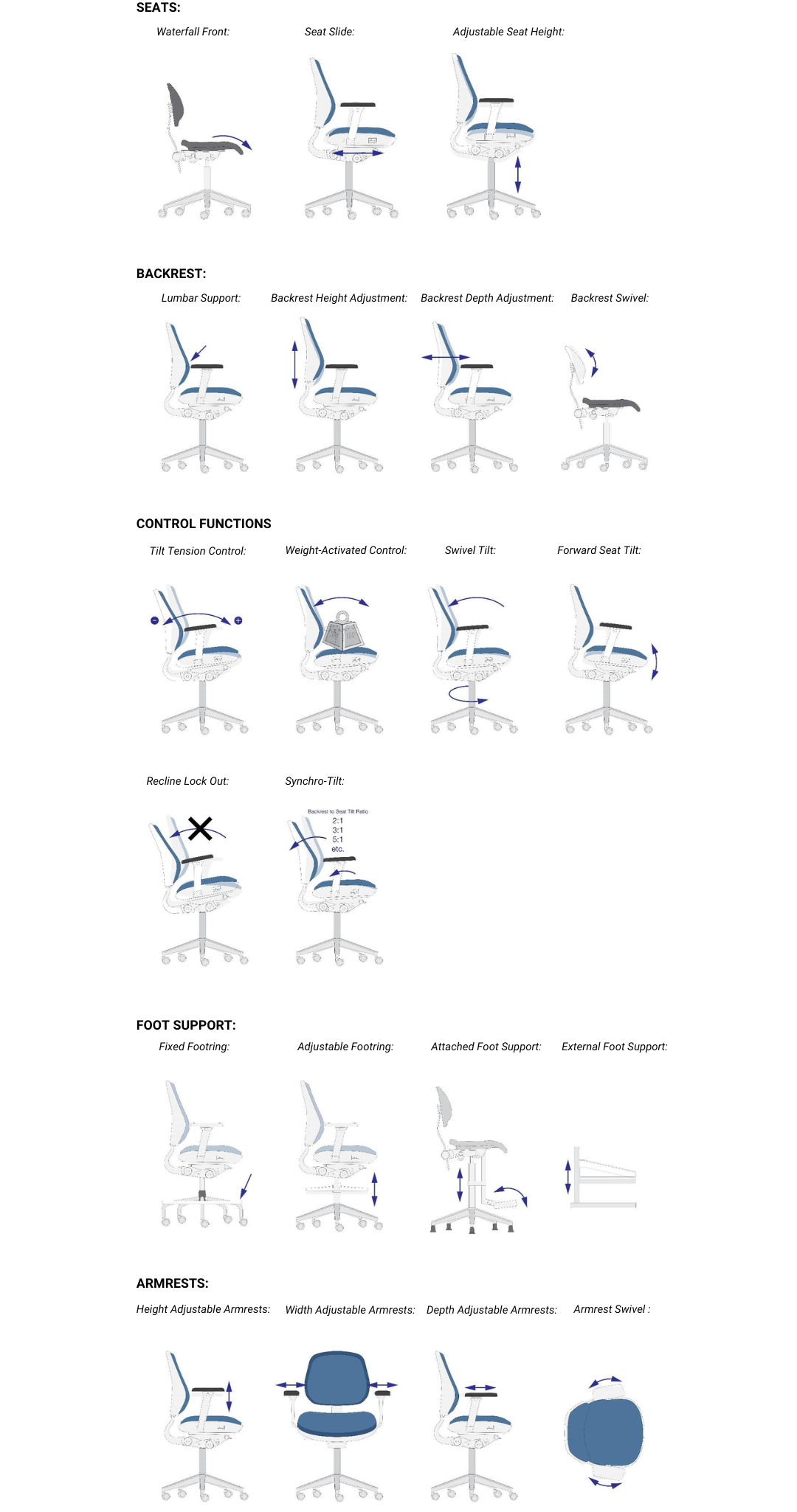
Final Thoughts: Invest in the Right Seating for Long-Term Comfort and Productivity
Choosing the right lab seating involves more than just picking a chair that looks good. By focusing on ergonomic features like seat height, lumbar support, and material durability, you can ensure that your lab staff stays comfortable, healthy, and productive throughout the day.
Whether you need seating for specialized lab tasks, high work surfaces, or environments with chemical exposure, our wide range of lab chairs and stools offers solutions designed to meet the demands of your workspace. Make your seating choice count—your team's comfort and well-being depend on it.
Canadian Scientific seating is designed using ergonomic principles and research data to offer a full range of options to be applied to the various tasks and environments we work within. Explore our laboratory seating options or build your own with our Build A Chair configurator!
Sources:
Ecomseating. Lab Grade Seating Cleaning Protocol.
Scientific Equipment & Furniture Association Recommended Practices. (2022). SEFA 12 - Laboratory Grade Seating.
Return to Blog Main Page
Advance your research with full confidence in your lab.

 Products
Products Products
Products